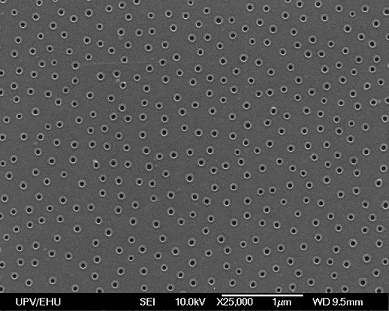BCMaterials researchers @ ImagineNano 2015

Meet our researchers at ImagineNano 2015 on March 13th (16:45) in Bilbao, and learn about our latest Bio&Med advances contacting Maite Goiriena.
Permalloy Nanodisks for Biomedical Applications
M. Goiriena-Goikoetxea1, J. Feuchtwanger2, M.L. Fdez-Gubieda1,2 and A. García-Arribas1,2
1BCMaterials, Universidad del País Vasco (UPV/EHU), Barrio de Sarriena s/n, 48940, Leioa, Spain. 2Departamento de Electricidad y Electrónica, Universidad del País Vasco (UPV/EHU), Barrio de Sarriena s/n, 48940, Leioa, Spain. maite.goiriena@bcmaterials.net
Magnetic nanoparticles are extensively studied for biomedical applications because their size are comparable to biological entities, while providing remote capabilities of actuation [1]. Disk shaped ferromagnetic nanoparticles add attractive possibilities to these characteristics. First, Permalloy (Py) nanodisks display much higher saturation magnetization values than oxide nanoparticles and second, depending on their geometry, they can present a spin vortex configuration which leads to net zero magnetization at remanence, eliminating the problem of particle agglomeration. Therefore, Py nanodisks present a huge potential for biomedical applications, ranging from cancer cell destroy by hyperthermia or mechanical actuation to MRI contrast enhancement and drug delivery [2]. While oxide nanoparticles are chemically synthetized, nanodisk physical fabrication methods offer higher control on particle size and the possibility of choosing among a larger spectrum of materials. Electron beam lithography (EBL) and Photolithography allow for tightly controlled fabrication of particles with virtually any size, shape and composition. The use of these techniques, though, imply a very low yield production (in the case of EBL) and the use of quite sophisticated and expensive equipment. As an alternative, self-assembling fabrication routes provide high volume and low cost production of well-defined Py nanodisks. In this work we present the results obtained by Hole-mask Colloidal Lithography (HCL) [3]. HCL utilizes the definition of a dense hole-pattern in a sacrificial resist layer onto which a layer of Py is deposited. Py disks are produced after lift-of of the resist layer. The results obtained show promising structures. The magnetic characterization performed by Magneto-Optical Kerr Effect (MOKE) indicates that vortex and single-domain states can be present [4]. [1] Q. A. Pankhurst et al., Journal of Physics D: Applied Physics (2003), 167. [2] D.-H. Kim, et. al., Nature Materials (2009), 9 165. [3] H. Fredriksson et al., Advanced Materials (2007), 19 4297. [4] G. Shimon et al., Physical Review B (2013), 87 214422. Figure 1 : hole-patterned resist.
Figure 1 : hole-patterned resist.
 Figure 2 : Permalloy nanodisks on SiO2 substrate.
Figure 2 : Permalloy nanodisks on SiO2 substrate.
If you wish, you can also download this abstract here.
Related news
María Calles, BCMaterialseko doktore berria
María Calles García zoriondu nahi dugu UPV/EHUn Materialen Zientzia eta Teknologian doktoretza lortzeagatik. Abenduaren 4an Maríak ‘Chelating Metal-Organic Frameworks and Their Polymer-Composites…Bartzelonako Mikroelektronika Institutuko ikertzaileekin hitzaldi gonbidatua (abenduak 3)
Datorren abenduaren 3an, 12:00etatik aurrera Leioako Martina Casiano auditorioan, BCMaterialsek Bartzelonako Mikroelektronika Institutuko (IMB-CNM) (CSIC) Antón Guimerà eta Xavier Illa ikertzaile…Hitzaldi gonbidatua Liu Yaorekin metal-litiozko bateriei buruz (abenduak 2)
Datorren astelehenean, abenduaren 2an, Liu Yao Shanghai Institute of Applied Physics-eko irakasleak "Li Metal Batteries: From Liquid to Solid-State" hitzaldia aurkeztuko du BCMaterials-en. Hitzaldia…BCMaterials-en urteko workshoparen arrakasta, material kritikoei eskainia
BCMaterialsen urteko workshoparen 2025. edizio arrakastatsuak ehun bat lagun bildu zituen azaroaren 19an Leioan, artearen egoera aztertzeko eta material kritikoei, materialen aplikazio kritikoei eta…



